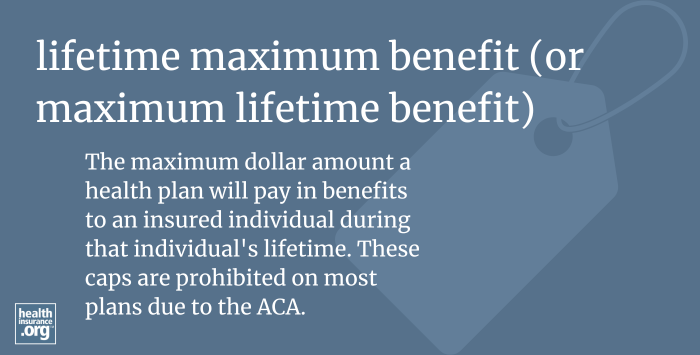
What is a lifetime maximum benefit?
Lifetime maximum benefit – or maximum lifetime benefit – is the maximum dollar amount a health plan will pay in benefits to an insured individual during that individual's lifetime.
The ACA did away with lifetime benefit maximums for essential health benefits, starting in September 2010, for all individual and group major medical policies. So these policies can no longer impose any lifetime limits on how much they'll pay for essential health benefits.
Grandmothered and grandfathered plans do not have to cover all of the ACA's essential health benefits, and neither do self-insured or large group plans. But for essential health benefits that are covered by these plans, there cannot be any dollar limits applied to the total lifetime benefits.
(In most states, "large group" means employers with 51 or more employees, but in Colorado, California, New York, and Vermont, it only includes employers with 101 or more employees.1 Colorado will switch to 51-employee definition starting in 2026.2)
Are all health plans prohibited from having lifetime benefit maximums?
Plans that aren't regulated by the ACA or that aren't considered health insurance at all can still have lifetime maximum benefits. These include, for example, short-term health insurance, fixed-indemnity plans, Farm Bureau plans in states that allow these to operate as non-insurance plans,3 and health care sharing ministry plans. All of these types of coverage can and do impose limits on how much they will pay in benefits.
Footnotes
- "Market Rating Reforms — State Specific Rating Variations" Centers for Medicare & Medicaid Services. Accessed Nov. 10, 2024 ⤶
- "Colorado Senate Bill 73" BillTrack50. Enacted May 1, 2024 ⤶
- "Information on Farm Bureau Health Plans, Health Care Sharing Ministries, and Fixed Indemnity Plans" Government Accountability Office. July 2023 ⤶


